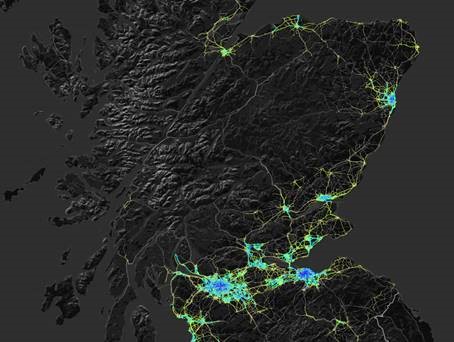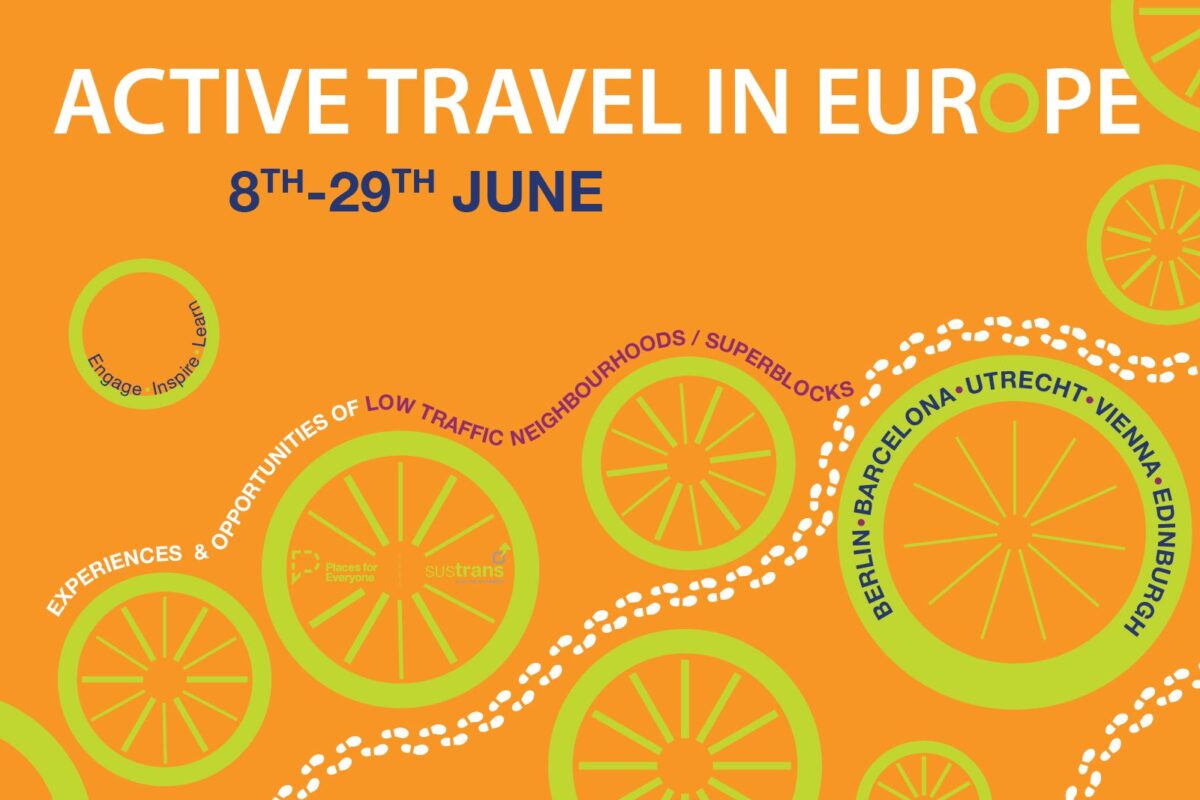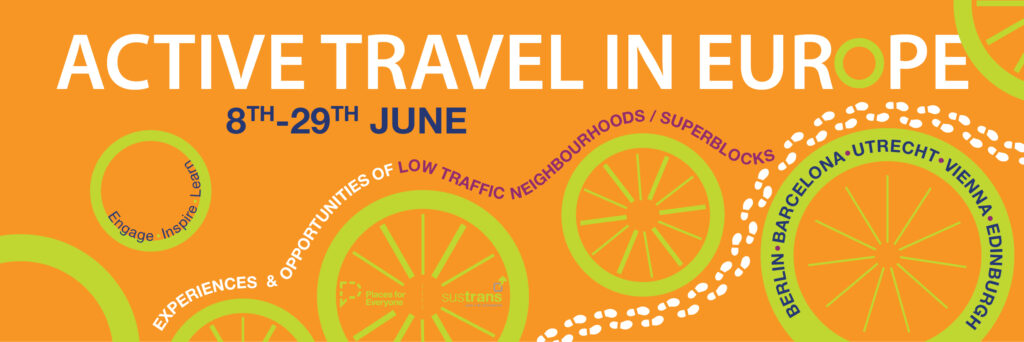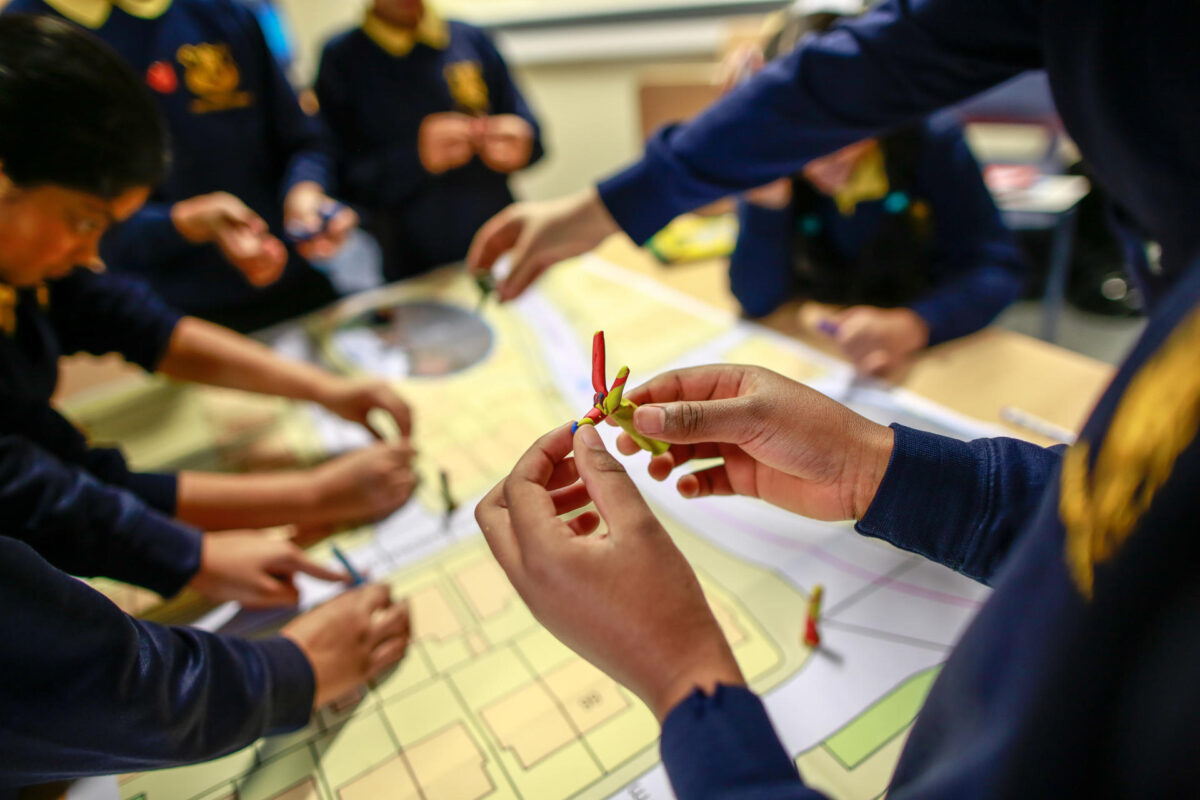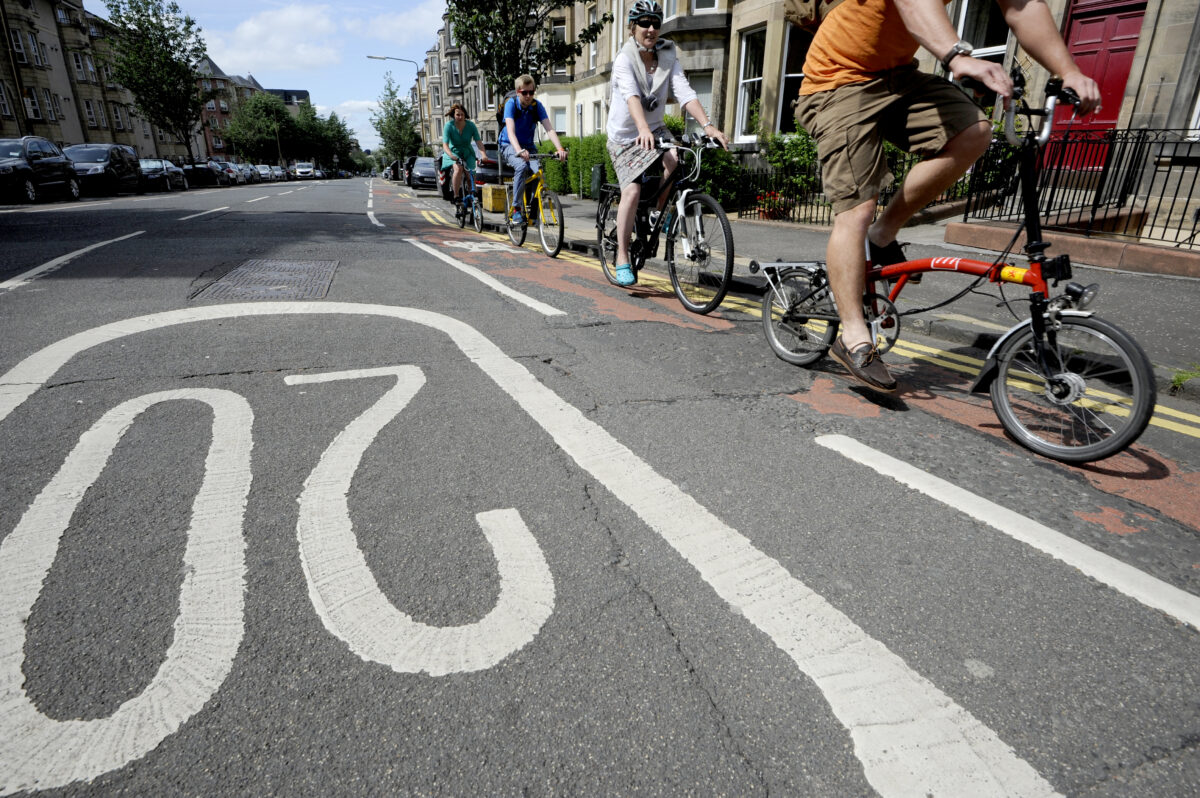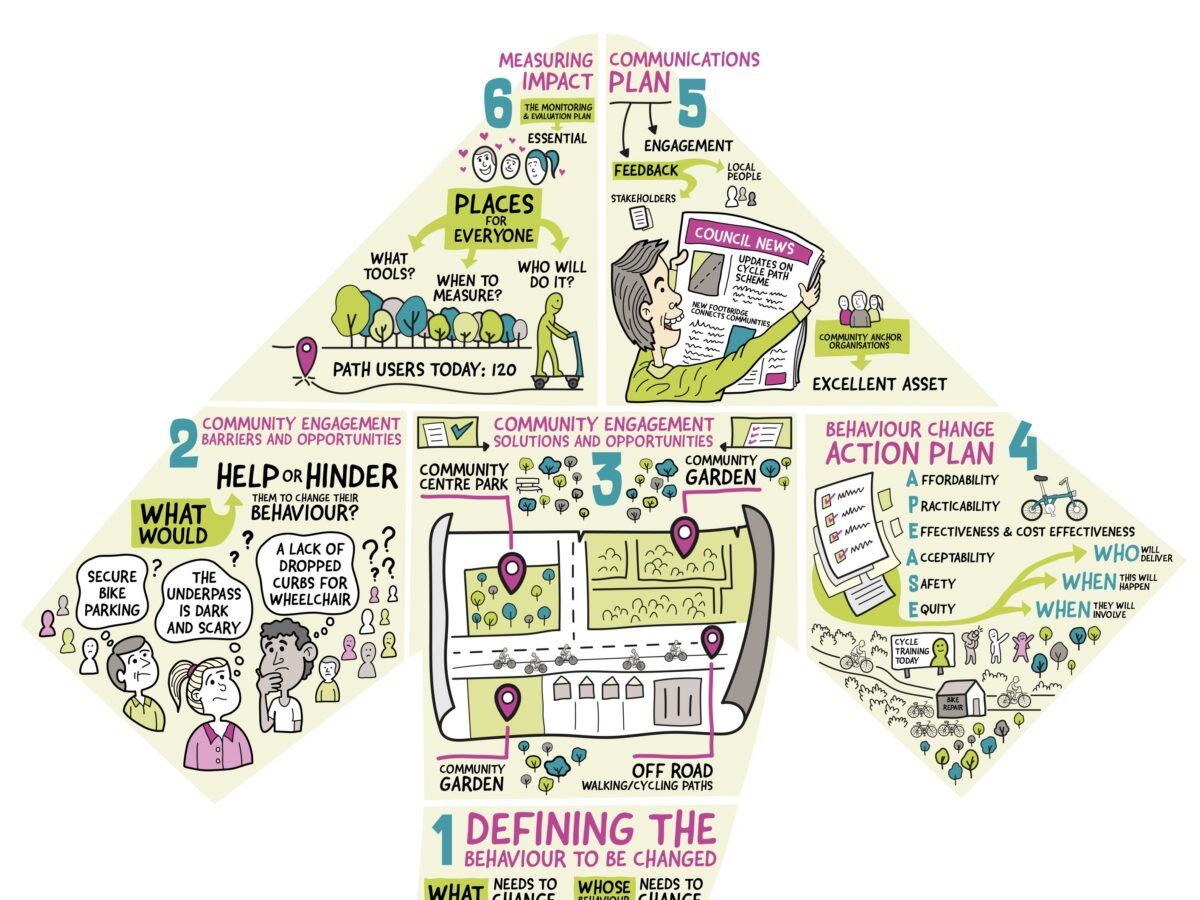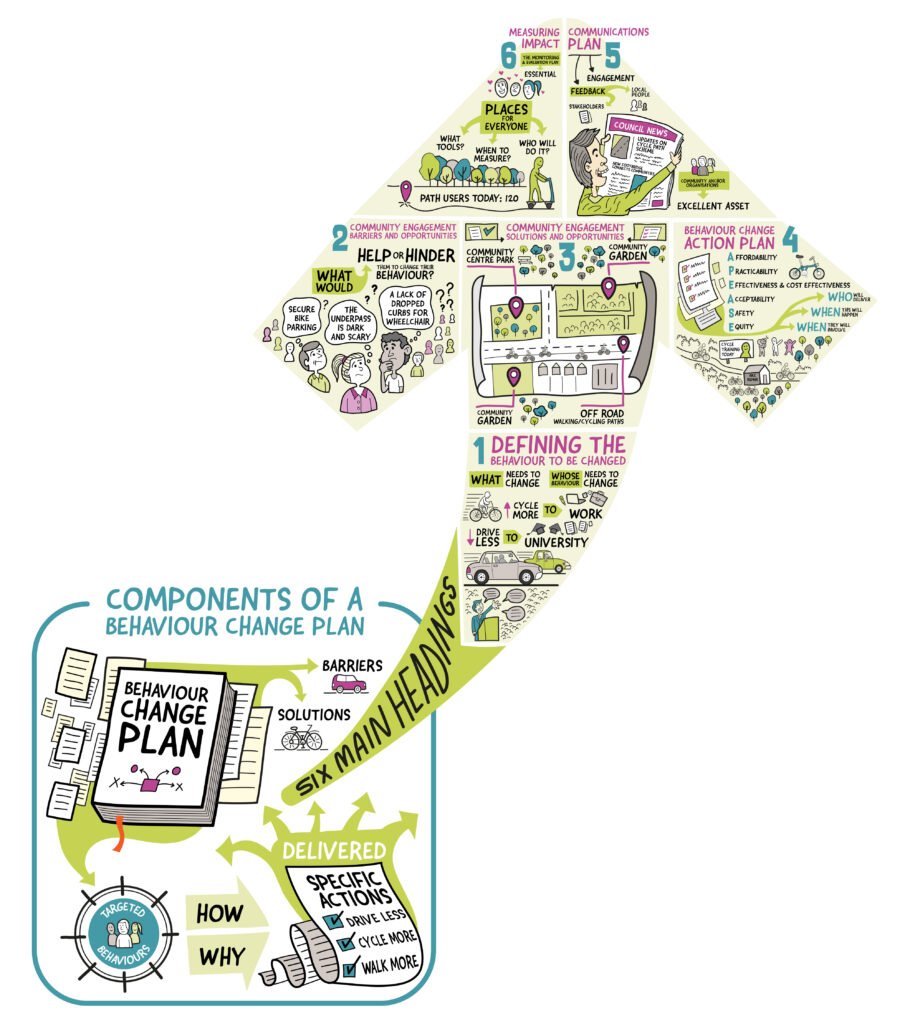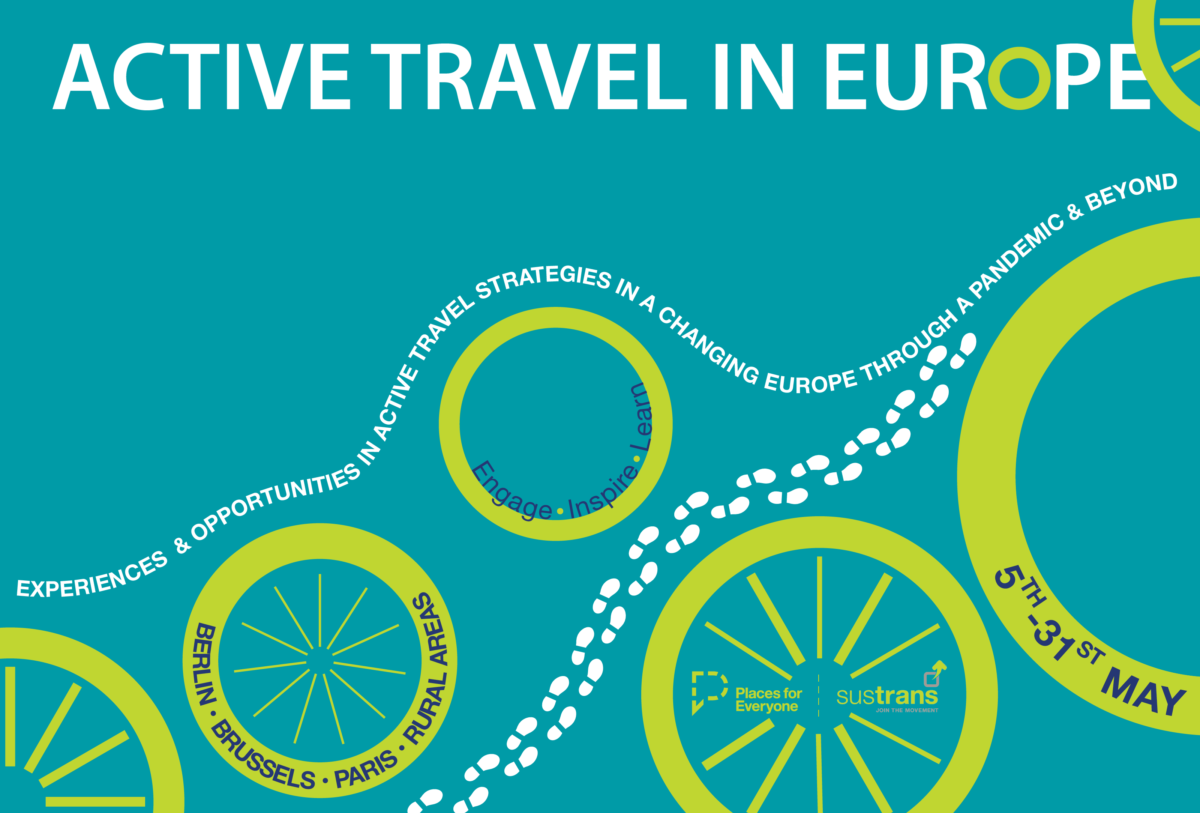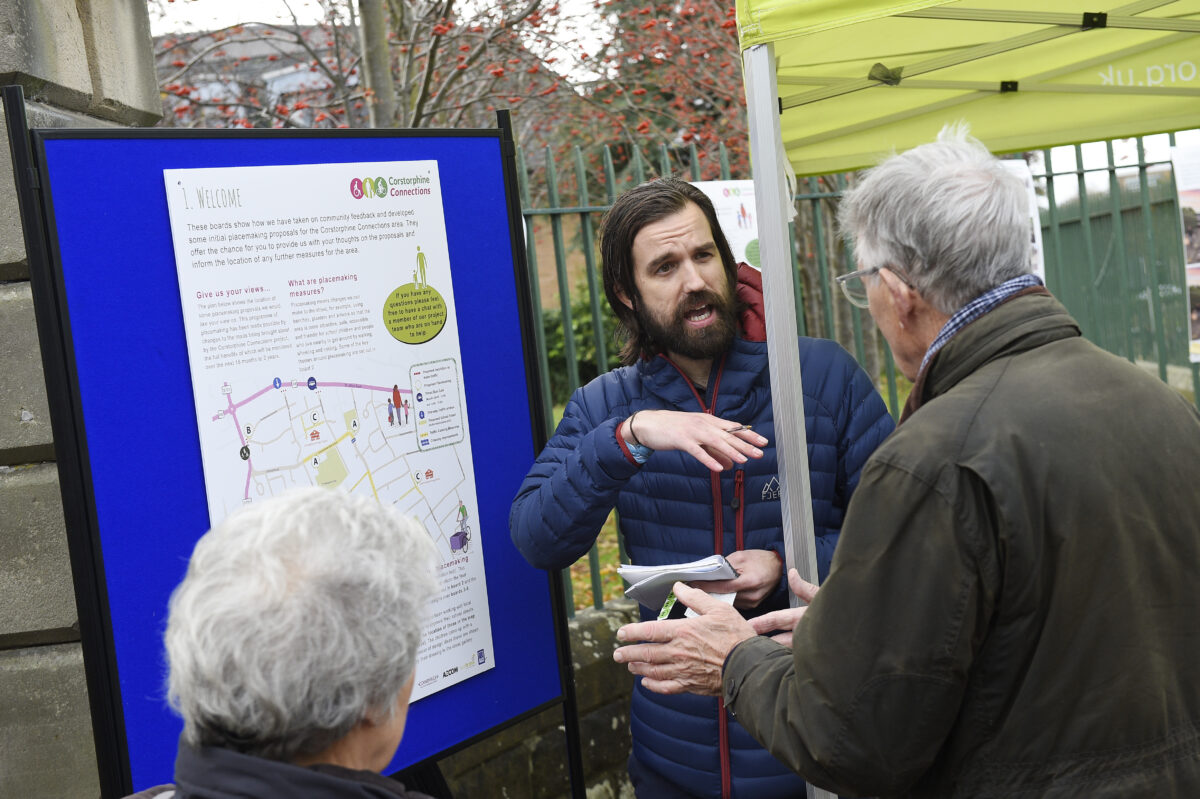Overview
This online session introduced the Network Planning Tool, which predicts the relative demand for cycling on the majority of streets and paths across Scotland.
The tool will provide a national and objective evidence base, which Places for Everyone partners will be encouraged to use, to help identify and prioritise infrastructure proposals in their Active Travel Strategy. Ahead of the completion of the tool, scheduled for the end of 2023, a prototype was released to partners in April.
This session covered:
- why the tool is being developed
- how it works
- how the prototype compares to the complete tool
- how it is envisaged the tool will be used by Sustrans and partners.
Session recordings
In the first recording below, we hear from:
- Simon Strain, Head of Programme (Grants) at Places for Everyone;
- Matt Davis, Principal Mobility Planner at Sustrans Scotland; and
- Robin Lovelace, Associate Professor of Transport Data Science at the University of Leeds, and one of the developers of the tool.
In this second recording, we hear from Russell Pepper, a Sustrans Senior Project Officer embedded in Dundee City Council. Russell talks about his experiences of using the tool alongside the Council’s Cycling Strategy.
Questions and answers
Q: Can the tool accept data from Local Authorities and other partners to make it more accurate at a local level?
Great question. No, the tool only takes input datasets that are available for all of Scotland currently. We may in future versions allow locally specific input datasets but that is not in the near-term roadmap. You will be able to download datasets to compare with locally specific datasets such as new housing developments, planned interventions, however. Which local input datasets were you thinking of Vikki?
Q: Will the Network Planning Tool be integrated into any of the Regional Transport Models?
We do not control regional transport models so this is not within our gift. However, we are open to conversations about sharing NPT outputs to feed in, or using outputs from other models to feed into the NPT although we will prioritise national and open input datasets.
Q: How can we ensure that rural areas that don’t necessarily have as much demand as cities, can still get funding for these important corridors?
The addition of other trip purposes (e.g. school) will help with that. The Phase 2 option of adding public transport integration and showing the cycling components of longer mutli-modal journeys will help in the longer term.
Q: How effective is the tool in less urban areas? (, Argyll and Bute Council)
This early prototype version of the tool is less effective in rural areas as it’s based on commute data, which accounts for a disproportionately low share of cycling trips in rural areas. This will be addressed as we add more trip purposes in future versions. School and other everyday journey purposes will be included in the release of the tool at the end of 2023. In the future there is the possibility to include leisure/recreational journeys as well as the cycling component of longer multi-modal journeys, which will further increase the effectiveness in rural areas.
Q: How will tool take account of increase of e-bikes? As distance and especially hills become less relevant to e-bike riders.
We will include an E-bike scenario and E-bike specific routing options.
Q: How does the tool deal with identifying origins and destinations in rural areas where most data zones are quite large?
The tool uses a Jittering method to disaggregate flows in large data zones. Currently we’re using Output Areas for subpoints but we can use other subpoints for origins and destinations. Any suggested datasets for origins and destinations in rural areas? See here for an overview of the Jittering approach used: https://findingspress.org/article/33873-jittering-a-computat…
In future versions we will use smaller zones as the basis of the commuting origin-destination data and we have commissioned this data from NRS. This will be completed for inclusion in the release at the end of 2023.
Q: The test version of the NPT doesn’t appear to show any cycle data in many rural areas and islands. I understand some locations may not show potential for many cyclists but nothing is shown for Cycle Friendliness or Gradient either, can this be shown for all roads/routes irrespective of use forecasts?
As per the ‘effectiveness of the tool in rural areas question’, the current lack of cycle data in many rural areas and islands is expected to be addressed by inclusion of additional trip purposes into the tool.
In terms of not showing cycle friendliness or gradient where there are no forecast trips, there are several practical reasons why this is done. Firstly the cycle friendliness and gradient are generated at the routing stage. So, any road with no cycle demand in our model has no data to visualise. To infill these missing roads, we would have to create additional routes to fill in the gaps. This would require an enormous amount of additional routing, and it would undermine our goal of updating the tool on a monthly basis. Secondly, by only showing data for roads that have some cycle demand we significantly reduce the volume of data that is stored on the server and sent to the user’s device. Including data for every road in Scotland would increase the data requirements by about an order of magnitude. This would significantly reduce the performance of the tool and increase the cost of web hosting.
However, some of the missing roads will be added as we add different journey purposes. Experience from England, Wales, and the Republic of Ireland show that the non-commute purposes produce very different networks. So, it is likely that this will also be true in Scotland.
One thing to note is that when viewing the cycle friendliness or gradient maps the choice of network type matters. For example, a busy road with no cycling demand under the “quietest” type will not show a gradient of cycle friendliness even if the data is available. You can check for this by switching between the different network types. This is an aesthetic choice we made to make the network confident with the number of cyclists view. But we would welcome your feedback.
Q: Will cycle tourism data be a filter options in later versions?
Including recreational cycling as a journey purpose is under consideration for development during 2024 .
Q: Can you export maps and GIS file formats from the online platform?
Not currently, but we plan to add this functionality when we publish v0.2, which will include travel to school potential in a combined network.
Q: Is the ‘number of cyclist’ filter ‘per day’?
Yes, this corresponds to the number of cyclists on a typical day. We will shift to AADT (annualised daily traffic) estimates for the final version.
Q: What data/information is used to determine cycle friendliness i.e. hostile or quiet, how up to date is this?
Please see the section of the manual in the development version of the tool: https://nptscot.github.io/manual/#map-controls
Q: Rural recreational cycling is also an economic growth opportunity. Will this be considered more going forwards?
Yes, there’s potential to include this in phase 2.
Q: How can you ensure that the Go Dutch model is accurate if the data used is 12 years old? Can you provide a link to the methodology for this model, please?
The current prototype does use 2011 census commuting data. This will produce networks which emphasise arterial routes to major employment centres. The current distribution of residential and major employment sites is likely to have many similarities to that in 2011, so we expect the results to be broadly applicable to the current picture. We are also updating the commuting layer prior to the end of 2023 to take account of recent population growth estimates. However, once the 2022 Census journey to work results are released, we plan to update this layer.
In addition, prior to the end of 2023 release we will also include travel to school and other everyday trips which will have different source data and baselines. For example the travel to school data was collected in September 2022, so the baseline for the Go Dutch Travel to School layer will be more recent.
The Go Dutch scenario itself was originally developed for the Propensity to Cycle Tool and the methodology is described in the Propensity to Cycle Tool manual https://npct.github.io/pct-shiny/regions_www/www/static/03a_manual/pct-bike-eng-user-manual-c1.pdf .
This information will also be included in the Network Planning Tool manual prior to release at the end of 2023.
Q: How is the baseline data calculated and how often is the website kept up to date?
The current prototype baseline data is from the 2011 census for journey to work. We plan to update with the 2022 census data when this becomes available. The website is currently kept up to date on a monthly basis.
Q: What is the network based on? I looked up Inverness. It did not show remote paths / routes for example locks are used to cross the canal. This means that a busy active travel route is not showing up on the tool.
The current prototype only includes commuter flows so routes that are heavily used by other trip purposes (such as shopping, recreation, school travel) will not show up. We will be adding more trip purposed before the full launch at the end of the year. Also by default the tool shows the fastest routes, these may be on very busy roads that in reality cyclists avoid. We do this to highlight places that cyclists may wish to cycle, but can’t due to a lack of suitable infrastructure. Finally our routes are calculated by cyclestreets which is in turn based on the OpenStreetMap (OSM). It is possible that an error in the OSM (e.g. a missing path link) is preventing routing in this area. So we suggest checking planning a cycle route on the cyclestreets website, in the immediate area where this issue occurs. This should identify if cyclestreets is picking up the path(s) in question, as part of cycle route planning. If an error is identified it is possible to edit paths in OSM, which may fix this problem.
Q: Are there any plans to link this tool with existing cycle counter data?
Cycle count data will be one of the data sources used to validate the tool’s outputs prior to release at the end of 2023.
Q: Is there more info on how cycle friendliness is calculated, that can be put on the system in the help section?
Good question, yes the friendliness score is from CycleStreets, they have more detail here: https://www.cyclestreets.net/help/journey/howitworks/#quietness I’ve made a note to add this to the manual in our issue tracker: https://github.com/nptscot/nptscot.github.io/issues/60 Any more feedback on there is welcome!
Q: Are there any plans to develop a layer to map existing cycle use-age / counts to assist in validating the tool? Strava heat maps are only partial data but can be an eye opener on what is actually being used
We are not currently planning to add visualisations of cycle count data into the tool. Cycling Scotland have an open data platform that displays Scotland-wide cycle count data. However, we are planning to use this cycle counter data to validate the tool’s outputs prior to release at the end of 2023. Strava data has a bias towards leisure & recreation journeys so we are not currently planning to use this in validation. However predictions of leisure & recreational journeys are being considered as a function to add to the tool during 2024. If so Strava data will be one data source that is likely to be used to build this function.
